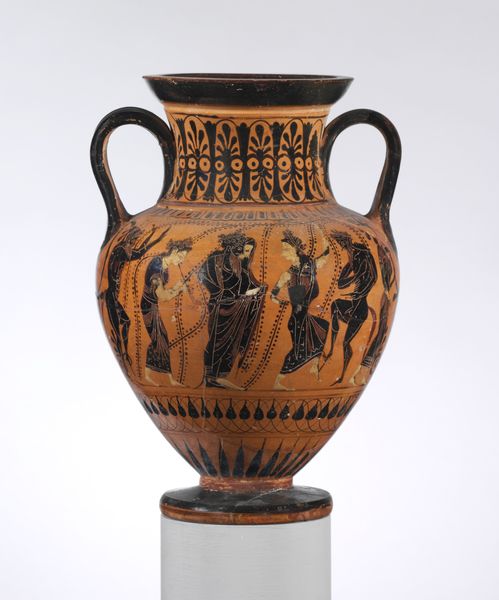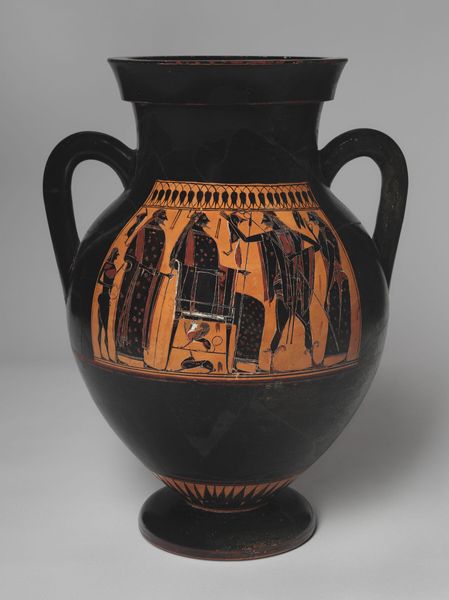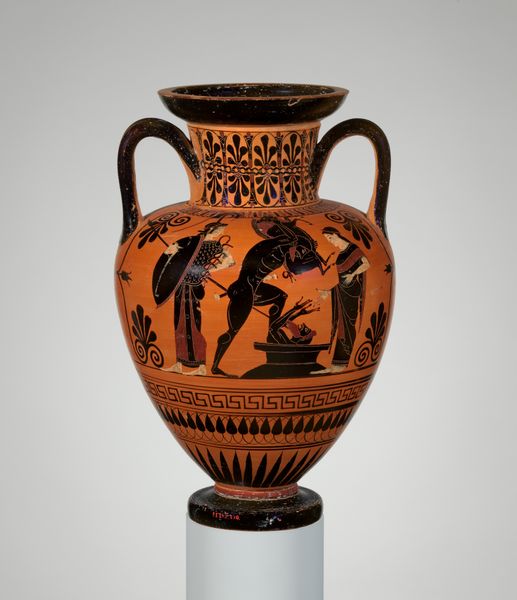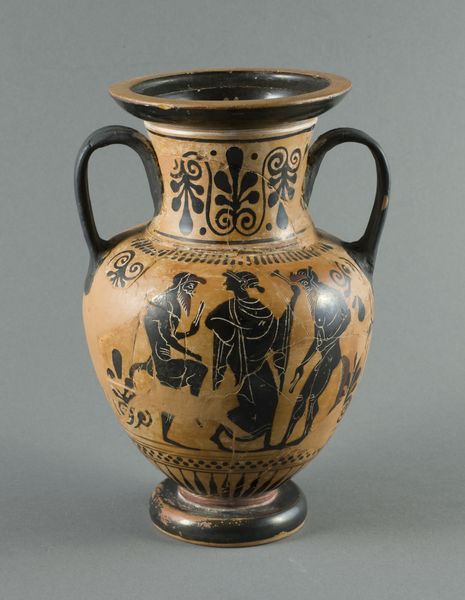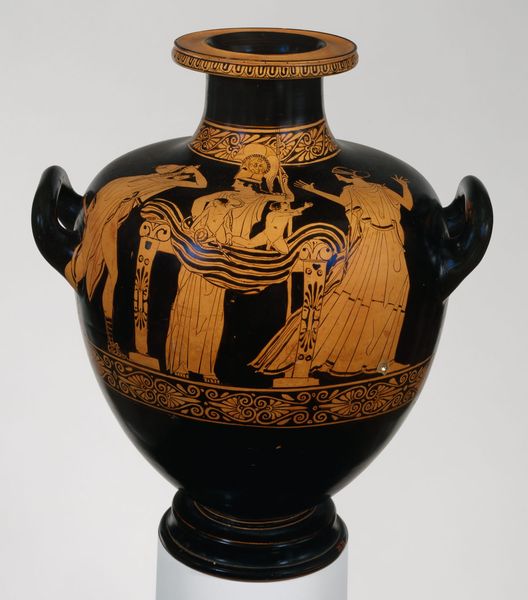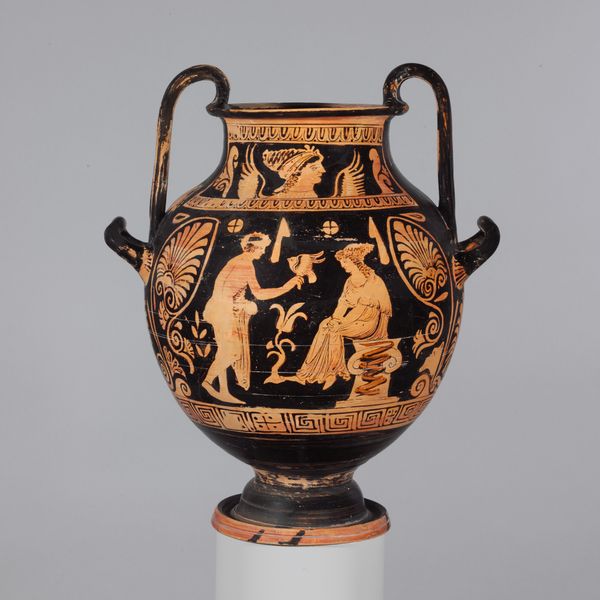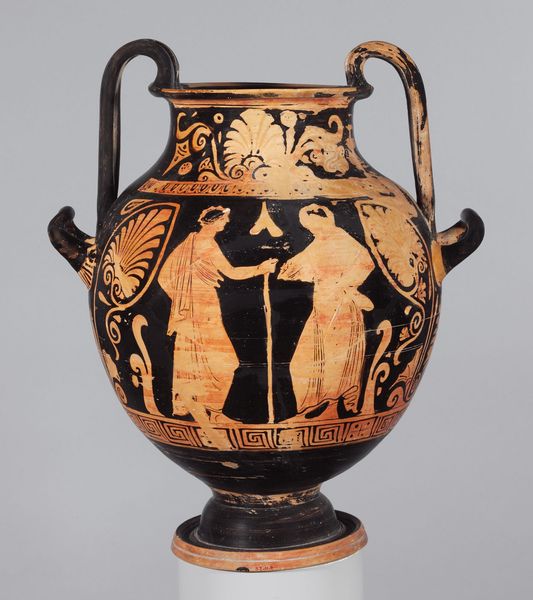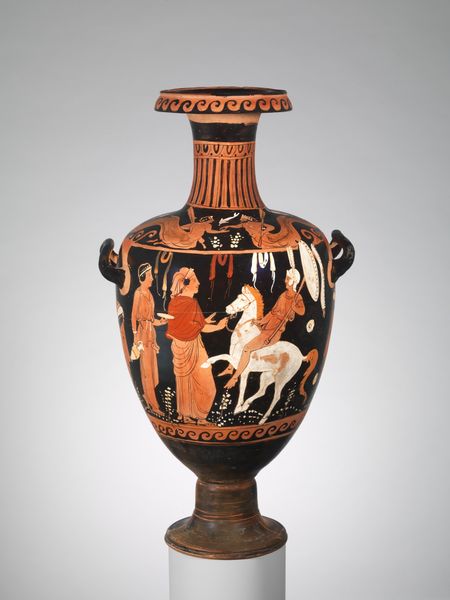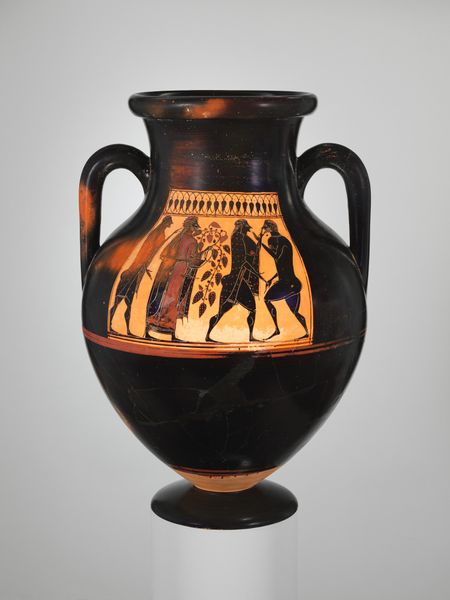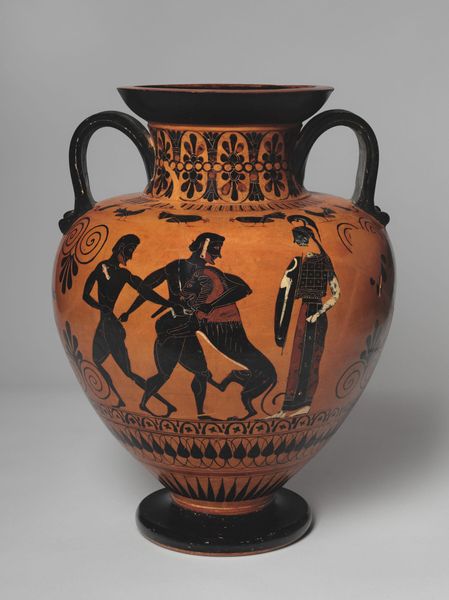
#
3d sculpting
#
circular oval feature
#
egg art
#
war
#
strong focal point
#
vase
#
sculptural image
#
black and white theme
#
roman-art
#
stoneware
#
framed image
#
arch
#
ceramic
#
men
#
round circular shape
Dimensions: H. 15 7/8 in. (40.3 cm)
Copyright: Public Domain
This terracotta neck-amphora was made in Greece, likely Athens, around 540-530 BCE by the artist Exekias. It depicts a scene of three figures, perhaps gods or heroes, engaged in a formal exchange. The amphora’s distinctive black-figure technique—silhouetted figures painted onto the clay surface—was a dominant style in Athenian pottery at this time. Its shape, size, and decoration suggest that it was likely used to contain and transport valuable liquids, such as wine or oil, and perhaps intended for ritual use. The scene likely refers to a popular myth or cultural narrative, reflecting the social values and beliefs of ancient Greek society. As historians, we can use archaeological records, literary sources, and comparative analyses of similar artifacts to reconstruct the amphora’s original context, function, and meaning. By studying such objects, we gain insights into the social structures, artistic practices, and cultural exchanges of the past. We can begin to understand not only what people valued but how art was crucial in the construction of such values.
Comments
No comments
Be the first to comment and join the conversation on the ultimate creative platform.
